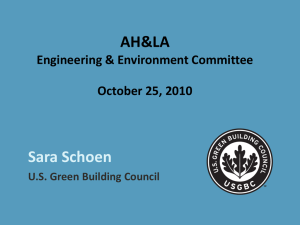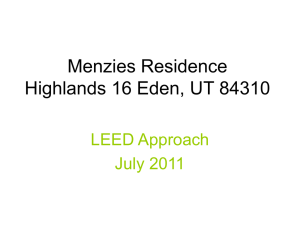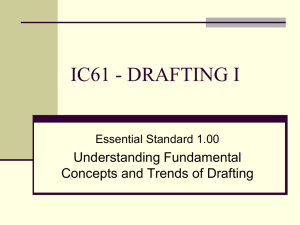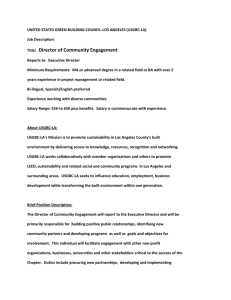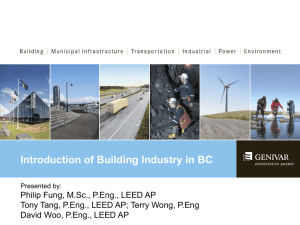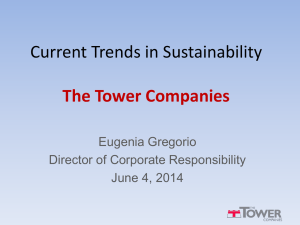greenhouse at park row
advertisement
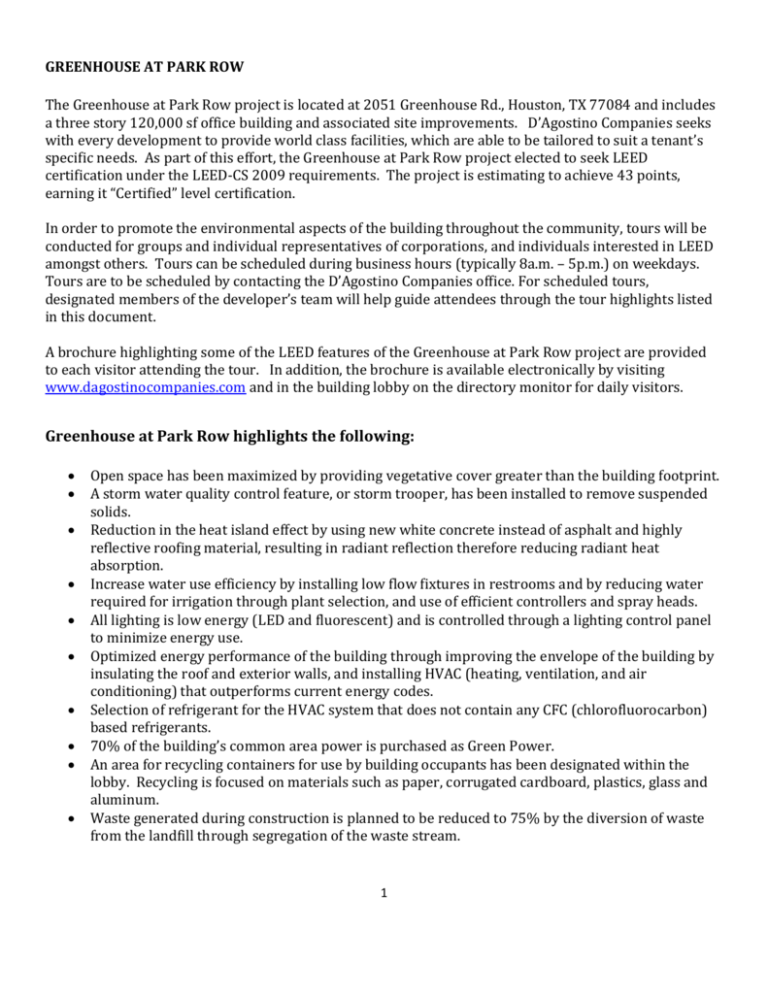
GREENHOUSE AT PARK ROW The Greenhouse at Park Row project is located at 2051 Greenhouse Rd., Houston, TX 77084 and includes a three story 120,000 sf office building and associated site improvements. D’Agostino Companies seeks with every development to provide world class facilities, which are able to be tailored to suit a tenant’s specific needs. As part of this effort, the Greenhouse at Park Row project elected to seek LEED certification under the LEED-CS 2009 requirements. The project is estimating to achieve 43 points, earning it “Certified” level certification. In order to promote the environmental aspects of the building throughout the community, tours will be conducted for groups and individual representatives of corporations, and individuals interested in LEED amongst others. Tours can be scheduled during business hours (typically 8a.m. – 5p.m.) on weekdays. Tours are to be scheduled by contacting the D’Agostino Companies office. For scheduled tours, designated members of the developer’s team will help guide attendees through the tour highlights listed in this document. A brochure highlighting some of the LEED features of the Greenhouse at Park Row project are provided to each visitor attending the tour. In addition, the brochure is available electronically by visiting www.dagostinocompanies.com and in the building lobby on the directory monitor for daily visitors. Greenhouse at Park Row highlights the following: Open space has been maximized by providing vegetative cover greater than the building footprint. A storm water quality control feature, or storm trooper, has been installed to remove suspended solids. Reduction in the heat island effect by using new white concrete instead of asphalt and highly reflective roofing material, resulting in radiant reflection therefore reducing radiant heat absorption. Increase water use efficiency by installing low flow fixtures in restrooms and by reducing water required for irrigation through plant selection, and use of efficient controllers and spray heads. All lighting is low energy (LED and fluorescent) and is controlled through a lighting control panel to minimize energy use. Optimized energy performance of the building through improving the envelope of the building by insulating the roof and exterior walls, and installing HVAC (heating, ventilation, and air conditioning) that outperforms current energy codes. Selection of refrigerant for the HVAC system that does not contain any CFC (chlorofluorocarbon) based refrigerants. 70% of the building’s common area power is purchased as Green Power. An area for recycling containers for use by building occupants has been designated within the lobby. Recycling is focused on materials such as paper, corrugated cardboard, plastics, glass and aluminum. Waste generated during construction is planned to be reduced to 75% by the diversion of waste from the landfill through segregation of the waste stream. 1 All elements used in the project, outside of those in the MEP systems, contain at least 20% recycled content by cost. They were also extracted, harvested or recovered, and manufactured within 500 miles of the jobsite. Permanently installed wood products are Forest Stewardship Council Certified. Greenhouse at Park Row is a non-smoking building. Smoking allowed only 25’ away from the building entrances. Improved ventilation systems and thermal comfort to improve indoor air quality, occupant comfort, well-being and productivity. Increase indoor air quality for occupants by using low VOC (volatile organic compounds) carpet, paint, adhesive, sealant and composite wood. The HVAC system is computer controlled to maximize energy efficiency and occupant comfort. The control system is expandable to allow future tenants to fully control their spaces as well. All windows are 1” insulated glass panels with a low –e coating to decrease heat gain while allowing maximum view. Details on LEED Credits Site SelectionSSp1 – Construction Activity Pollution Prevention – Prerequisite SSc5.2 – Site Development – Maximize Open Space SSc6.2 – Storm water Design – Quality Control SSC7.1 – Heat Island Effect – Non-roof SSCC7.2 – Heat Island Effect – Roof SSC9 – Tenant Design and Construction Guidelines Reduce pollution from construction by controlling soil erosion, waterway sedimentation and airborne dust generation. Provide vegetated open space equal to or greater than the building footprint. This is a prerequisite for LEED certification. Open space greater than the building footprint has been provided A storm trooper has been installed that removes 80% of the suspended solids. Implement a storm water management plan that reduces impervious cover, promotes infiltration and captures and treats the storm water runoff from 90% of the overage annual rainfall using acceptable bet management practices (BMPs). BMPs must be capable of removing 80% of the overage annual post development total suspended solids load. Use materials with a solar reflectance index 100% of the paving will be of at least 29 for 50% of the site hardscape. concrete instead of asphalt. Use roofing materials with a solar reflectance index of 78 or greater for a minimum of 75% of the roof surface. Publish an illustrated document that provides tenants with a description of the sustainable features in the base building, information on LEED for Commercial Interiors and how to coordinate the base building features and TI. 2 100% of the roof will be white TPO with an SRI of 102. All future tenants will be provided a set of tenant design and construction guidelines describing the LEED features of the building and how they could benefit those seeking LEED certification for their TI work. Employ strategies that in aggregate use 20% less water than the water use baseline calculated for the building (not including irrigation.) Reduce potable water consumption for irrigation by 50% from a calculated midsummer baseline case. This is a prerequisite for LEED certification. WEc3 – Water Use Reduction Employ strategies that in aggregate use less water than the water use baseline calculated for the building (not including irrigation). The water efficient fixtures utilized in the restrooms and janitors closet yielded water savings of 32%, earning the project two additional points. EAp1 – Fundamental Commissioning of Building Energy Systems To verify that the project’s energy-related systems are installed, calibrated and perform according to the owner’s project requirements, basis of design and construction documents. Demonstrate a 10% improvement in the proposed building performance rating for new buildings, compared with the baseline building performance rating. Zero use of chlorofluorocarbon based refrigerants in new base building HVAC systems. Demonstrate a percentage improvement in the proposed building performance rating for new buildings, compared with the baseline building performance rating. This is a prerequisite for LEED certification. Select refrigerants and HVAC&R that minimize or eliminate the emissions of compounds that contribute to ozone depletion. Engage in at least a 2 year renewable energy contract to provide at least 35% of the building’s electricity from renewable sources. Provide and easily accessible dedicated area for the collection and storage of materials for recycling for the entire building. Greenhouse at Park Row HVAC system is designed to meet the credit requirements. WEp1 – Water Use Reduction – 20% WEc1 – Water Efficient Landscaping EAp2 – Minimum Energy Performance EAp3 – Fundamental Refrigerant Management EAc1 – Optimize Energy Performance EAc4 – Enhanced Refrigerant Management EAc6 – Green Power MRp1 – Storage and Collection of Recyclables 3 The landscape architect has selected water efficient plantings as well as irrigation controllers and spray heads. This is a prerequisite for LEED certification. This is a prerequisite for LEED certification. Efficient lighting and HVAC systems have been utilized in the building, yielding a savings in excess of 16%. Greenhouse at Park Row has contracted with Green Mountain Energy. This is a prerequisite for LEED certification. MRc2 – Construction Waste Management Recycle nonhazardous construction debris. MRc4 – Recycled Content Use materials with recycled content of 10% Greenhouse at Park Row utilized or 20% based on cost, of the total value of materials in excess with 20% the materials in the project. recycled content, earning the project two points. MRc5 – Regional Materials Use building materials or products that have been extracted, harvested or recovered, as well as manufactured, within 500 miles of the project site for a minimum of 10% or 20%, based on cost, of the total materials value. Use a minimum of 50%, based on cost, of wood based materials and products that are certified by the Forest Stewardship Council. Greenhouse at Park Row utilized in excess 20% regional materials, earning the project two points. IEQp1 – Minimum Indoor Air Quality Meet the minimum requirements of ASHRAE standards for ventilation rates. HVAC design maximizes ventilation and includes CO2 monitoring system. This is a prerequisite for LEED certification. IEQp2 – Environmental Tobacco Smoke Control Prevent or minimize exposure of building occupants, indoor surfaces and ventilation air distribution systems to environmental tobacco smoke. No smoking is allowed within 25’ of building entrances. This is a prerequisite for LEED certification. IEQ3 – Construction Indoor Air Quality Management Plan – During Construction Develop and implement a plan for the construction and preoccupancy phases of the building that reduced indoor air quality problems and promotes the comfort and well being of construction workers and building occupants. The plan provided by the contractor addressed protection of the HVAC duct work, protecting absorptive materials and providing proper HVAC filter media during construction. IEQc4.1 – LowEmitting Materials – Adhesives and Sealants Reduce the quantity of indoor air contaminants that are odorous, irritating and/or harmful to the comfort and well being of installers and occupants by using low VOC (volatile organic compound) adhesives, sealants and primers. Architect has specified low VOC adhesives and sealants for this credit. MRc6 – Certified Wood 4 Waste generated during construction was reduced in excess of 75% by the diversion of waste from the landfill through segregation of the waste stream. 50% of permanently installed wood products are Forest Stewardship Council Certified Reduce the quantity of indoor air contaminants that are odorous, irritating and/or harmful to the comfort and well being of installers and occupants by using low VOC (volatile organic compound) paints and coatings Reduce the quantity of indoor air contaminants that are odorous, irritating and/or harmful to the comfort and well being of installers and occupants by using low VOC (volatile organic compound) flooring systems. Reduce the quantity of indoor air contaminants that are odorous, irritating and/or harmful to the comfort and well being of installers and occupants by using non urea based formaldehyde resins in composite wood. Minimize building occupant exposure to potentially hazardous particulates and chemical pollutants. Architect has specified low VOC paints and coatings for this credit. IEQc7 – Thermal Comfort – Design Provide a comfortable thermal environment that promotes occupant productivity and wellbeing. HVAC designed to maximize thermal comfort for building occupants by giving future tenants the ability to provide high level of individual control. IDc1.1 Green Power Greenhouse at Park Row designates through energy contract with provider that 70+% of building’s energy is Green Power. IDc1.2 Heat Island Effect – Non-Roof By providing 100% new white concrete, the project earned an additional point. IDc1.4 Education and Outreach Tours of Greenhouse at Park Row can be arranged through the property manager and information is provided to visitors IEQc4.2 – Low Emitting Materials – Paints and Coatings IEQc4.3 – LowEmitting Materials – Flooring Systems IEQc4.4 – LowEmitting Materials – Composite Wood IEQc5 – Indoor Chemical and Pollutant Source Control 5 Architect has specified carpets that comply with the CRI Green Label Plus testing program. Architect has specified composite wood products to comply with requirements for this credit. Walk-off mats are utilized at the main entrances, janitor closets are separately exhausted and high quality MERV 13 filters were installed in the HVAC system. on the lobby flat screen, to educate visitors about the “green” features in the building. IDc1.5 Green Housekeeping Greenhouse at Park Row has implemented green housekeeping policies and has contracted a third party service company to provide “Green Housekeeping”. ID2 LEED Accredited Professional Rennell Associates, an independent LEED consultant has been hired by the Architect to provide independent consulting/ certification services. RPc1.1 Construction Waste Management The U.S. Green Building Council has identified construction waste management as a regional priority for Houston. By diverting ___% of construction waste for MRc2, the project earned an additional point. RPc1.2 Storm Water Design - Quality Control The U.S. Green Building Council has identified storm water quality control as a regional priority for Houston. By achieving SSc6.2, the project earned an additional point. 6


